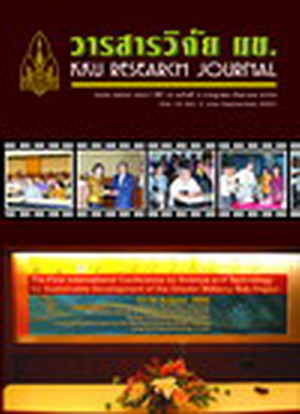PCL-PLCG Composite Nanofibers Produced by Electrospinning
Main Article Content
Abstract
New electrospun fibers were successfully produced using single- and co-polymers of poly- (ε-caprolactone) (PCL) and poly-(L-lactide-co-caprolactone-co-glycolide) (PLCG). The composite nanofibers were also fabricated by injecting each polymer alternately and simultaneously. The electrospun PCL was found to form complete fibers with average diameter of 652.28 ± 297.40 nm, while the electrospun PLCG, layered PCL-PLCG composite, and mixed PCL-PLCG composite had a combination of fibers, nano-sized beads, and PLCG drops. The average sizes of PLCG, layered PCL-PLCG composite, and mixed PCL-PLCG composite electrospun fibers were 127.93 ± 84.50, 399.21 ± 361.09, and 586.42 ± 418.95 nm, respectively. Although the size of the mixed PCL-PLCG composite fibers was greater than the layered PCL-PLCG composite fibers, fewer nano-sized beads and PLCG drops were formed by electrospinning co-polymers, suggesting mixing of the two polymers in the produced fibers. The biological properties of these biodegradable fibers as suitable scaffolds for cell attachment and proliferation are currently under investigation.


